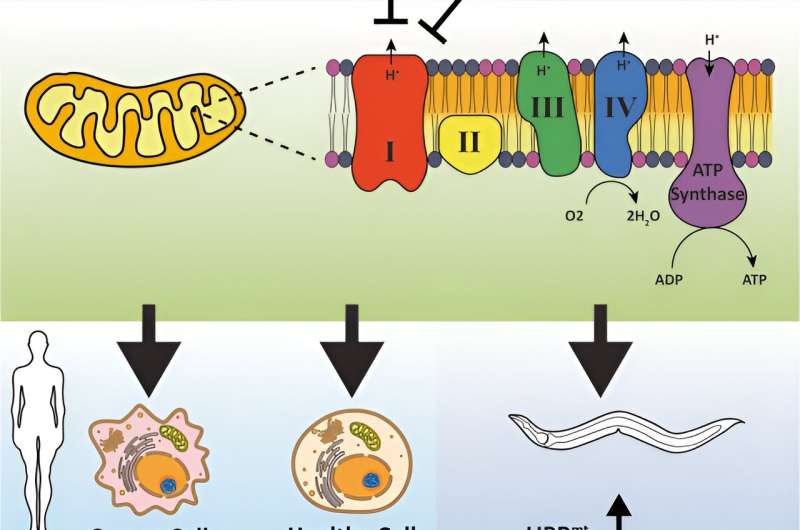This article has been reviewed according to Science X's editorial process and policies. Editors have highlighted the following attributes while ensuring the content's credibility:
fact-checked
trusted source
proofread
Molecules derived from sea sponge show promising effects in cancer, mitochondrial function

A groundbreaking study led by the USC Leonard Davis School of Gerontology in collaboration with Dominican University of California explores how small molecules derived from sea sponges affect energy production in mitochondria and details their remarkably targeted effects on various types of cancers.
The study's co-corresponding authors were USC Leonard Davis School Assistant Professor Ryo Sanabria and Tyler Johnson, associate professor of chemistry at Dominican University, and first author was Naibedya Dutta, postdoctoral fellow in the Sanabria lab. The findings are published in the journal GeroScience.
The research focused on mycothiazole (MTZ), a molecule found in the marine sponge C. mycofijiensis, and its synthetic analog 8-O-acetylmycothiazole (8-OAc). These molecules demonstrated significant efficiency in inhibiting the function of electron transport chain (ETC) complex I, a key component of mitochondrial energy production.
Potential against cancer
The study compared both molecules to the more extensively studied ETC inhibitor rotenone. Mainly used as an agricultural pesticide, rotenone has exhibited anti-cancer properties in human cells in previous studies. However, in this study, rotenone also displayed significant toxicity to non-cancer cells in addition to its effect on cancerous cells.
Both MTZ and 8-OAc exhibited higher toxicity against liver carcinoma, breast cancer, and glioblastoma cells compared to non-cancerous cells in vitro, demonstrating markedly better selectivity than rotenone. Notably, 8-OAc, which is more shelf-stable than MTZ, showed the best selectivity for cancer cells versus healthy cells, highlighting its potential in future therapeutic development, Sanabria said.
"When we test the drugs in human cells, they preferentially target cancer cells for cell death pathways. It does so very robustly; we're getting anywhere from 60% to 80% cell death in cancer cells," they said.
"But when we treat non-cancer cells with the exact same concentrations, we're getting very little effect. Not only are we not seeing any cell death, these drugs basically have no change to the transcriptome of non-cancer cells, which suggests that it's really doing nothing to the non-cancerous cells at the same concentrations that it's able to kill cancer cells."
Effects on aging
Further in vivo experiments in the worm C. elegans revealed the molecules' ability to extend lifespan when they were administered during adulthood. Both molecules appear to activate a mitochondria-specific unfolded protein response pathway, but interestingly, MTZ and 8-OAc employed distinct parts of the pathway to promote longevity.
Sanabria said that MTZ and 8-OAc's effects on mitochondrial function are an example of mitochondrial hormesis—the idea that applying a small amount of stress to the mitochondria and inhibiting its function slightly can trigger cellular responses that are ultimately beneficial for health and lifespan, such as increasing the targeting of old or unhealthy cells for death by apoptosis.
"Our next step is to test whether these drugs will have senolytic capacity. This is a really important thing in anti-cancer therapy because one of the things that happens with cancer treatment is that you actually increase senescent cell burden in the patient," Sanabria explained.
"Cancer cells are uncontrolled cell growth, and if you're trying to stop cell growth, then you make senescent cells, or cells that have stopped growing. Increased senescent cell load can increase inflammation and can have other negative side effects; that's one of the reasons why people who have had cancer treatment can have very rapid premature aging.
"If we can find drugs that have both anti-cancer and anti-senescence activities, it overcomes the biggest hurdle of the current anti-cancer therapeutic market."
More information: Naibedya Dutta et al, Investigating impacts of the mycothiazole chemotype as a chemical probe for the study of mitochondrial function and aging, GeroScience (2024). DOI: 10.1007/s11357-024-01144-w
Provided by University of Southern California





















